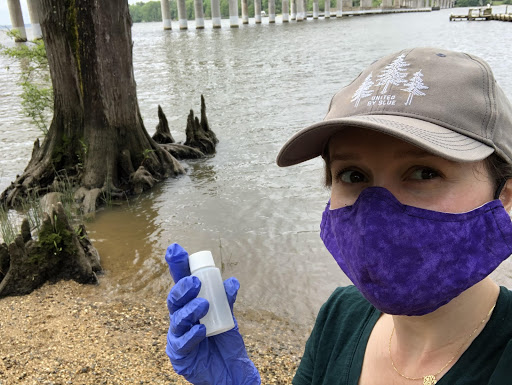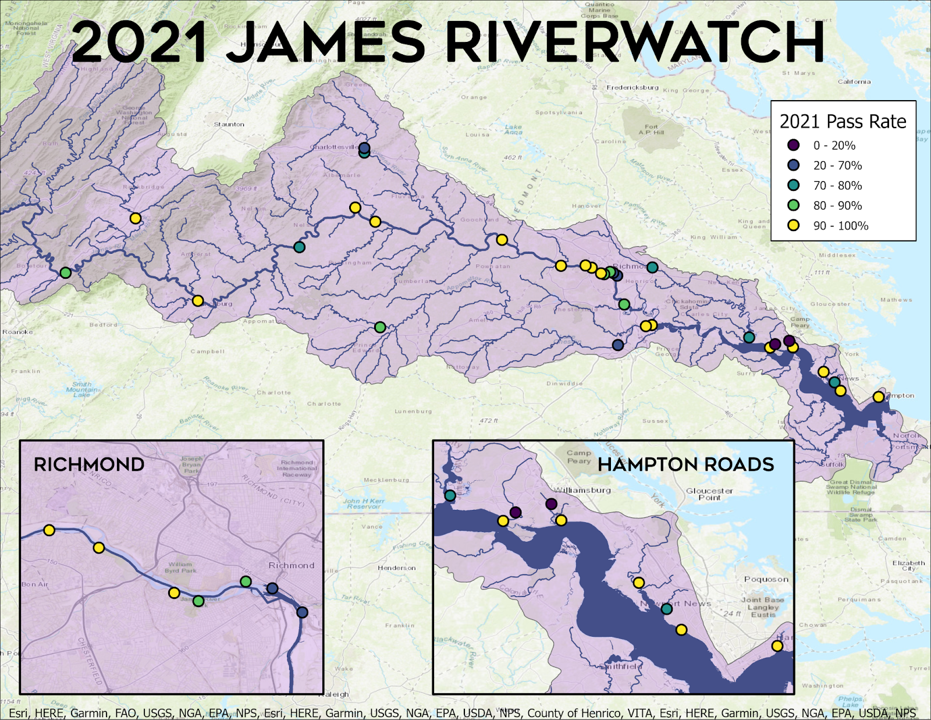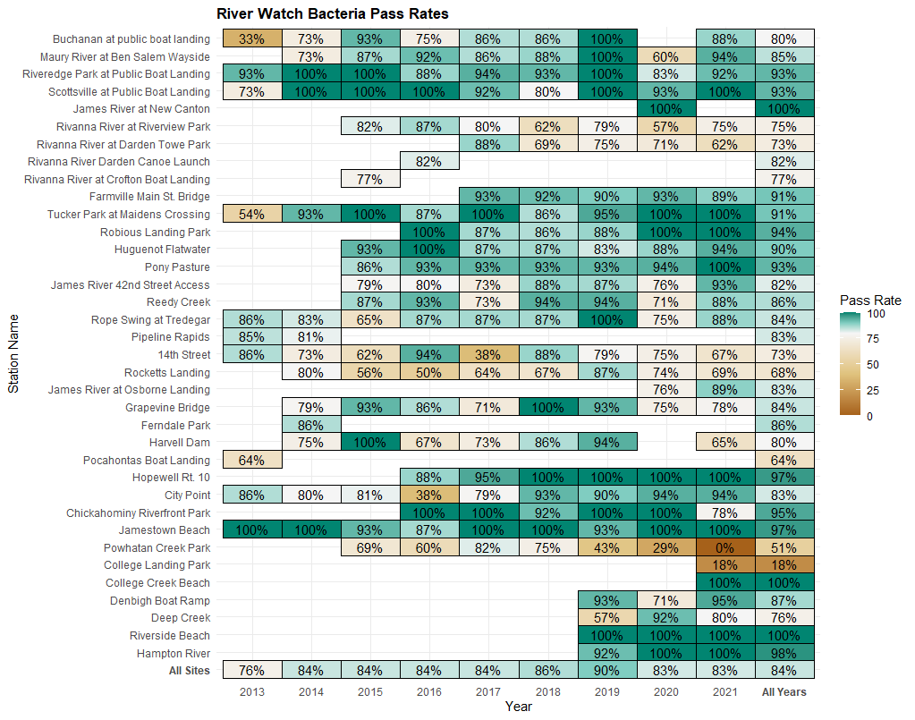Every year as the weather starts to warm up and summer begins, the James River Association runs a water quality monitoring program called James River Watch to help river-goers answer the question, “Is it safe to swim in the James”.
Each Thursday, we rely on an awesome team of volunteers and partners across the watershed to test at 36 sites from Buchanan to Hampton before the weekend. To evaluate safety conditions, the volunteers test the water for temperature and bacteria levels, and we pull River Level information from the National Weather Center into an interactive map. By clicking on a station, you can see the current levels as well as what the levels were in past weeks for each of the different variables. Volunteers also test the turbidity, or cloudiness, and the conductivity, or saltiness of the sites as well.

Why do we test for river levels, temperature and bacteria? Well if the river level is really high the current could be too strong to swim or you might be required to wear a life jacket. If the river level is too low, you might not be able to swim or paddle, or it might just be less fun. Water temperature can also impact your safety. Hypothermia is a risk if the combined air and water temperature is less than 100, even if it seems warm outside! The other safety concern is bacteria levels, as swimming or paddling in water with high bacteria levels has shown to increase the number of gastrointestinal hospitalizations. These higher bacteria levels typically take place after a rainstorm, as the runoff can cause excess nutrients or food for the bacteria to wash into the river, letting their populations grow much bigger.
In 2021, the overall bacteria pass rate was 83%, this means that focusing just on bacteria levels, it was safe to swim in the river 83% of the times we tested between Memorial Day and Labor Day. We also calculate pass rates for each site. There were 9 sites that passed 100% of the 2021 season. These were the Scottsville Boat Ramp, Tucker Park at Maidens Crossing, Robious Landing, Pony Pasture, Hopewell at Route 10, Jamestown Beach, College Creek Beach, Riverside Beach, and Hampton Marina. There are two sites where we are concerned about the high rate of failure, College Landing Park and Powhatan Creek. College Landing Park was a new station in 2021 and we think that the higher results there may have been due to the location at the park where we take the samples. It can get very shallow at low tide and it’s possible that because of this, the samples weren’t reflective of the actual conditions in the creek. We’ve moved the sampling location for 2022 and are excited to see if this results in better scores. We’ve been working with the Hampton Roads Sanitation District and James City County to try to explain what is happening at Powhatan Creek. From our testing so far, it appears that the high results are not due to human sewage or leaky pipes, which is good news! These sources are more likely to cause illness compared to other sources like a beaver dam upstream or dog waste.
We’ve been testing through James River Watch since 2013 and the number of sites has grown considerably since that first year. We started with 10 initial sites, and have been able to increase to the current 36 sites through our enthusiastic volunteers and partnerships with the Rivanna Conservation Alliance, Peninsula Master Naturalists, Virginia State University, American Water, the Appomattox River Company, Twin River Outfitters, and Riverside Outfitters. If you want to be a volunteer, we are currently registering folks for training here.





